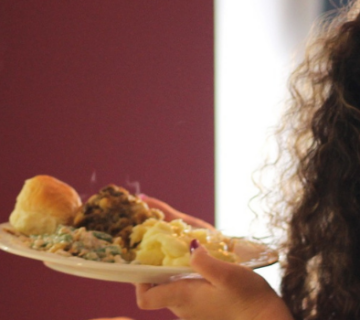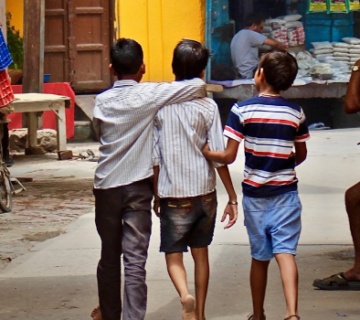29/06/2019
Sixty people from different Churches came together to commemorate the 500th anniversary of the Reformation in Switzerland. A journey through history and remembrance, through knowledge and the dialogue of life to understand the roots of the Reformed Church and the challenges it faces today.
“This weekend I experienced how a ‘life of fullness’ really is possible in the Reformed Church and the Catholic Church through Jesus present in the midst of those who love one another. I want to contribute in a completely new and more conscious way to building bridges between the two confessions. This is how one of the participants summed up the three days dedicated to “Reformation Zurich” promoted by the Focolare Movement in the Swiss city to understand what caused the Reformation in this city. Five hundred years ago in January, Huldrych Zwingli (1484-1531), who at that time was still a Catholic priest, started preaching in the pulpit of the Grossmünster interpreting the Gospel of Matthew. This is what many consider to be the starting point of the Reformation in Zurich. The aim of these three days was to bring people of different denominations together and introduce them to the history and particular richness of the Reformed Church. To love “one’s neighbour’s Church as one’s own” (Chiara Lubich), you first need to get to know it. Sixty people came to the weekend from Germany, Austria, Italy, Slovakia and various parts of Switzerland.
 The simplicity of the Reformed Church in Baar, all centred on the Bible, the baptismal font and the pulpit formed the setting for the first of the weekend’s events. Dialogue with the local pastor enabled the participants to have a deeper understanding of reformed spirituality. He did not hide the difficulties that his Church was experiencing but he shared his passion for seeking guidance and support from the Word of God alone, not from an institution.
The simplicity of the Reformed Church in Baar, all centred on the Bible, the baptismal font and the pulpit formed the setting for the first of the weekend’s events. Dialogue with the local pastor enabled the participants to have a deeper understanding of reformed spirituality. He did not hide the difficulties that his Church was experiencing but he shared his passion for seeking guidance and support from the Word of God alone, not from an institution.
Successive events took place in Zurich. At the Theological Seminary, Dr. Gergely Csukás, Senior Assistant at the Institute of Swiss Reformation History, described the social, political, and religious situation in Zurich during the Middle Ages, highlighting Zwingli’s aspirations as a reformer, and emphasizing its relevance. “Reformed Christians are closer to me than ever before”, said one of the pariticipants. “Through the history and everything that has been communicated to us, the beauty, and also the suffering caused by what happened, have made a deep impression on me. It is about the life of Christians together. I want to start again and go ahead”. Another said: “Never before have I received such a clear explanation and understanding of Zwingli’s aspirations which are still relevant today. I have learned to appreciate him, his first companions and the reformers who offered their lives for the Gospel.
Despite the unfavourable weather forecast, the participants still managed to walk through the places where Zurich’s Reformer worked – from the Grossmünster to the Wasserkirche, from the Lindenhof to the plaque marking the place where the first Anabaptists were drowned in the Limmat River. Pastor Peter Dettwiler spoke specifically about the work of reconciliation with the Anabaptists and the Amish in the United States, while Pasteur Catherine McMillan presented a picture of the Reformed Church in the world today. At the end of the visit, prayers were offered up in the crypt of the Grossmünster. “When I walked into the stark church in Baar on that first evening I was shocked” – said one of the participants – “That space did not seem to radiate anything solemn or sacred to me. Then, in the dark crypt of Grossmünster where we had gathered for prayer as sisters and brothers in Christ, it was as if an interior light suddenly illuminated the grey, secular walls. I felt deep joy and reverence.”
On the last day, writings from St. Nicholas of Flue, patron saint of Switzerland, and Chiara Lubich, founder of the Focolare, were read out which formed the spiritual basis for the celebration of Holy Communion. “Being the one body of Christ in diversity” – as one of those present commented – “showed us what the visible unity of the Church looks like. It was an encounter with Christ! I hope that with life and theological dialogue coexisting we will continue to grow closer to one another”.
Stefania Tanesini


 Italiano
Italiano Español
Español Français
Français Português
Português




No comment